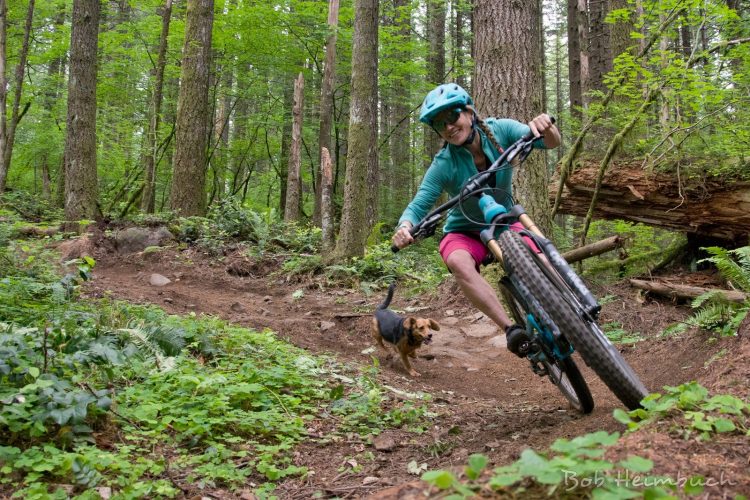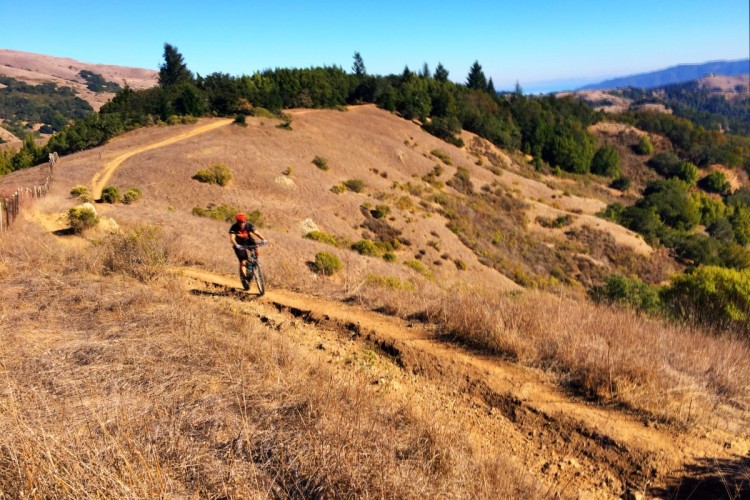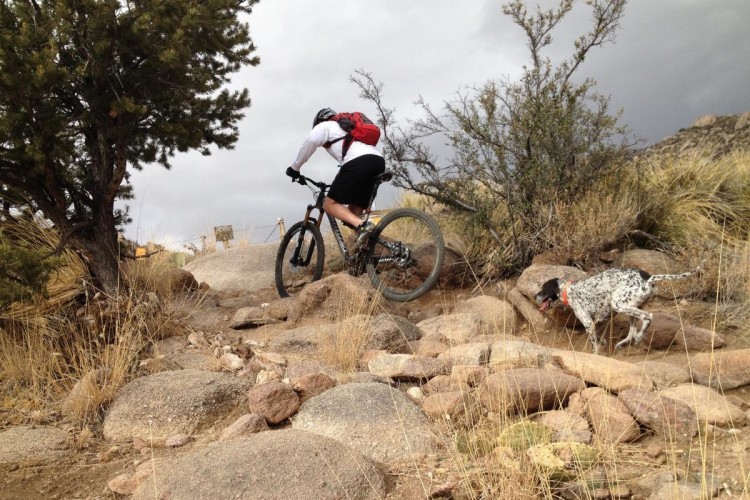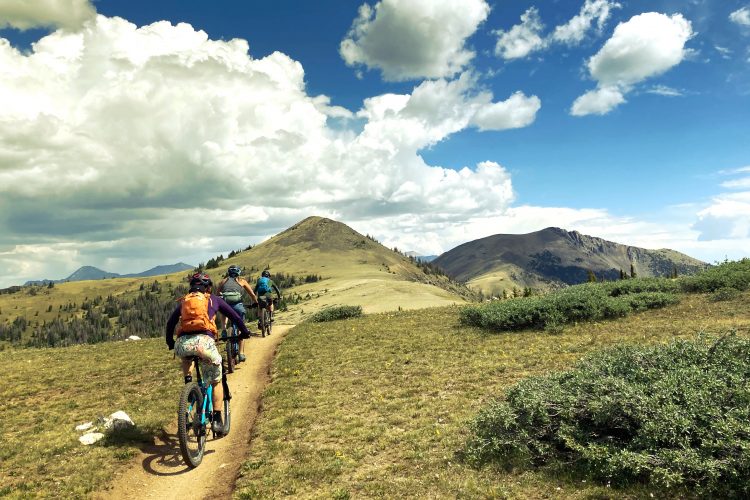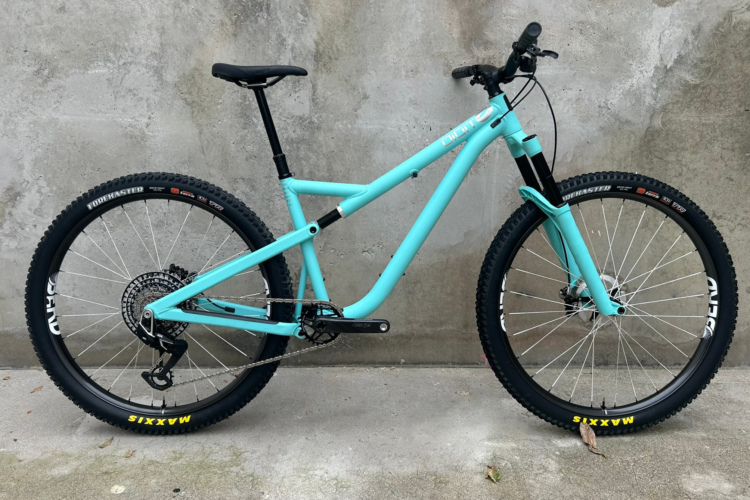We live on an increasingly crowded planet and trails, whether we hike or ride them, are a refuge from the daily grind. And while these wonderful strips of bare ground in our open spaces help us escape from civilization, it often seems like the rest of civilization is escaping on them at the same time, creating the possibility of less-than-civilized encounters. This is where etiquette comes in. Etiquette isn’t just about holding out your pinky when you take afternoon tea; it has practical application on the trail. Even if you develop all the skill and fitness in the world, without proper etiquette, you can be a detriment to the sport. Before we hit the high points of trail etiquette, let’s look at a few reasons why etiquette is important.
1. The most obvious reason is simply being a good neighbor to other trail users. I could go on at length about everything from civilized behavior to karma, but this one should be self-explanatory.
2. Even if you’re not concerned about your fellow trail user, most rules of bike trail etiquette protect the rider as well. For instance, if you fail to yield to a horse, guess who wins? 1,400lbs of spooked animal can be a bit dangerous.
3. Even if you’re not concerned with your safety, trail etiquette is necessary to preserve access to trails and maintain the possibility of gaining access to new trails. Just like so much in life, a split-second decision for a quick moment of fun can have negative long term consequences–not just for yourself, but for all your fellow bikers. Not riding when it would damage the trail, or not ruining a hiker or equestrian’s outing, is a courtesy to your fellow bikers (and yourself) as well as other trail users.
Rules of the Trail
While this sounds preachy, it’s really not meant to be. The good news is that we can fully enjoy the sport and be good trail neighbors at the same time. Even some experienced mountain bikers have never been exposed to proper trail etiquette; for the new rider, they may have no idea there is such a thing. Take the time to share proper trail etiquette with new riders when you can. The single best source of trail etiquette and the basics we should all adhere to is the International Mountain Bike Association. Below are IMBA’s rules of the trail: six easy steps to good multi-user trail relations:
1. Ride Open Trails: Respect trail and road closures — ask a land manager for clarification if you are uncertain about the status of a trail. Do not trespass on private land. Obtain permits or other authorization as required. Be aware that bicycles are not permitted in areas protected as state or federal Wilderness.
2. Leave No Trace: Be sensitive to the dirt beneath you. Wet and muddy trails are more vulnerable to damage than dry ones. When the trail is soft, consider other riding options. This also means staying on existing trails and not creating new ones. Don’t cut switchbacks. Be sure to pack out at least as much as you pack in.
3. Control Your Bicycle: Inattention for even a moment could put yourself and others at risk. Obey all bicycle speed regulations and recommendations, and ride within your limits.
4. Yield Appropriately: Do your utmost to let your fellow trail users know you’re coming — a friendly greeting or bell ring are good methods. Try to anticipate other trail users as you ride around corners. Bicyclists should yield to other non-motorized trail users, unless the trail is clearly signed for bike-only travel. Bicyclists traveling downhill should yield to ones headed uphill, unless the trail is clearly signed for one-way or downhill-only traffic. In general, strive to make each pass a safe and courteous one.
5. Never Scare Animals: Animals are easily startled by an unannounced approach, a sudden movement, or a loud noise. Give animals enough room and time to adjust to you. When passing horses, use special care and follow directions from the horseback riders (ask if uncertain). Running cattle and disturbing wildlife are serious offenses.
6. Plan Ahead: Know your equipment, your ability, and the area in which you are riding, and prepare accordingly. Strive to be self-sufficient: keep your equipment in good repair and carry necessary supplies for changes in weather or other conditions. Always wear a helmet and appropriate safety gear.

Photo: RidgeToRivers.org
Additional Guidelines
Of course, not every situation you will encounter fits neatly into one of these six rules, and that’s where a little common sense, and more importantly, the willingness to be the “good guy” comes in. Also, each of the rules above is, at best, a generalization, and there are exceptions. What follows now is just one man’s modus operandi, and should not be taken as commonly-accepted practice. Just know that there are infinite variations, and you may have to improvise at any time. That’s where the “good neighbor” mindset comes in so handy.
Side note: I became an avid hiker at age 9 and didn’t get my first mountain bike until age 35. I have been an equestrian, even managing a tourist-oriented horseback riding stable and leading hundreds of trail rides on horseback. I have also at times been a motorcyclist/ORVer/ATVer, as well as a cross country skier. I have built miles of trail and maintained many dozens more. With this background, I believe my etiquette is well rounded and balanced.
Riding uphill is hard: that’s why the general rule is for the downhill rider to yield. After all, gravity’s going to get him going again pretty quick. However, if I’m riding uphill and I see a rider coming down who’s really in the flow, I may choose to not interrupt that flow and yield myself. Besides, it gives me a chance to catch my breath.

Photo: Arizona State Parks
Frequently, hikers will step off trail to allow bikers to pass. This is not the time to get off the bike and inform them that they need not yield. Some may not know the “rule,” yet others may simply wish to not disturb the biker’s flow and, unfortunately, some are just plain afraid of bikers. In the case a hiker yields the trail, a “thank you” goes a long way. Although the hiker has yielded the trail, you should still slow down, almost to walking pace. Not only does this minimize the disturbance to the hiker who has yielded, it gives you time to extend that “thank you,” and maybe even follow it up with a “have a great hike!” While some hikers are obsessively predisposed with hatred for cyclists, most truly appreciate this gesture.
When riding with a group, be aware of how many are behind you. As you pass a hiker, say “three more,” or whatever the appropriate number is. This gives the hiker (or other biker) situational awareness: it can be disturbing to step back out on the trail only to have more bikes whiz by. When riding alone, a “just me” will suffice to let the other trail user know the trail is once again clear.
Finally, many trails have a local flavor. Some trails may not be marked as uni-directional, but they have evolved into such over time by those who use them most. A little local knowledge also goes a long way. Take the time to research trails; reading reviews here on Singletracks often yields some good hints as to how to get the most out of your ride. Take the time to talk to the locals if you’re not familiar with a trail. I find most locals love to share their knowledge: they’re rightfully proud of their trails and want you to be impressed with them as well.
Oh yeah, one other thing which should go without saying: Strava is not an excuse to ignore any of the above!

Your Turn: Do you have any additional tips for cordial interactions with other trail users? Share them in the comments section below!












